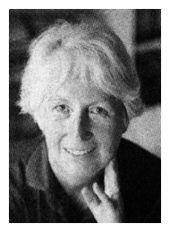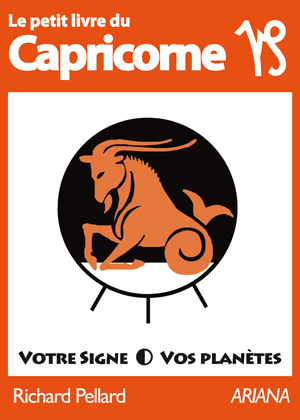Your Planets
Portraits of the Planets
Aspects between Planets
The planetary ages
The planetary families
Planets in Signs
The Planets in comics


Doctor of science, director of biology research at the CNRS until her retirement, Suzel Fuzeau-Bræsch encountered astrology at the age of 42, when Uranus (dominant in her chart) transited the Midheaven and began its second half-cycle. She was passionate about this taboo subject in the scientific community. Bravely, she did not hesitate to face criticism, commiseration or rejection from her colleagues. Since 1989, she has published three books that have caused a stir: L’astrologie (coll. Que Sais-je, P.U.F.), Astrologie, la preuve par deux (Ed. Robert Laffont) and Pour l’astrologie (Ed. Albin-Michel). Interview with an extraordinary scientist.
.png)
.png)
.png)
 1970. The first computers offering chart studies appear in England. S. Fuzeau-Bræsch is in London on a mission with a scientific delegation. Curious, she obtains the computerized astrological portraits of some of her acquaintances. As a game, she removes all mention of dates of birth and tries to assign each person the astrological portrait that most resembles them. Surprise: it has a very high percentage of successful identifications. Some time later, she replicated the experiment with other people, with similar results. A question arose, a passion was born.
1970. The first computers offering chart studies appear in England. S. Fuzeau-Bræsch is in London on a mission with a scientific delegation. Curious, she obtains the computerized astrological portraits of some of her acquaintances. As a game, she removes all mention of dates of birth and tries to assign each person the astrological portrait that most resembles them. Surprise: it has a very high percentage of successful identifications. Some time later, she replicated the experiment with other people, with similar results. A question arose, a passion was born.
Richard Pellard: The history of science shows that important discoveries very often arise from a “chance”, of a “error” or a “misunderstanding”. The astrological portraits produced by computers are for the most part erroneous by simplicity: they do not interpret a chart synthetically and almost never take into account its complex organization, in particular the hierarchy of the elements which constitute it. The “astrological portraits” issued by the printers are almost always a succession of interpretations of the planets in Signs, a succession which does not take into account the dominant or non-dominant character of these planetary positions. This is still true today, it was even more so at the beginning of computerized astrology, since the very limited memory of the first computers did not allow very sophisticated portraits to be produced. And yet, it was from this first experiment that you began to lean, with a positive a priori, on the astrological fact. How do you analyze retrospectively, after having seriously studied astrology, the circumstances of this discovery?
Suzel Fuzeau-Bræsch: First of all, I had no a priori positive as you say; on the contrary, I considered astrology to be something irrational. Reading computerized texts struck me, not by their perfect accuracy, but by partially correct elements that could not be due to chance. I thought so there was “something down there” that I had to learn to judge. No, there was no “passion”, immediately the interrogation. My temperament and my training as a scientist have always led me to judge on the spot, after in-depth knowledge. This is why I decided from that moment to learn astrology, to make it work and, only after that, to judge and take sides.
At the time when you discovered astrology, you worked precisely, within the framework of your research in biology, on the correlations between the solar light signals and the periodic triggering of certain animal behaviors. These phenomena “photoperiods” vary according to the length of the days and nights, therefore of the seasons, therefore of the height of the Sun in relation to the equator… Zodiacal astrology is not far, since each Sign is defined by a specific day-night or day-night ratio. Can you tell us about your research on photoperiodism?
I worked, in fact, on the life cycles of insects in relation to the length of the days, the phenomena of “diapause”. The diapause is a very particular state which allows the animal in cold blood to pass the winter, but by preparing this state when the season has not yet arrived, precisely by regulating itself on the lengths of the days which anticipate the bad season. It is a very important and widespread phenomenon in the living world. But we cannot really think of the zodiac insofar as in the southern hemisphere, the seasons are reversed and so are the diapauses, while the astrological zodiac seems to be the same for the whole Earth. Photoperiodism is important for humans, but it’s not just that.
If animal behavior changes according to the length of days and nights, the rhythm of the seasons, it is reasonable to think that the same is true for human behavior. Astrology could therefore be studied experimentally in CNRS laboratories. Have you tried to convince your scientific colleagues to undertake this research?
Regardless of photoperiodism, it is certain that astrology could be studied in the laboratory. But at the CNRS there is unfortunately no question of it today. Of course, I have spoken to colleagues about it and some agree with me.
How and with whom did you subsequently study astrology? Has your scientific training served or hindered you in the study and practice of this discipline?
It is absolutely certain that my scientific training served me in the study of astrology that I carried out. Rigor, rationalism, determinism, so many essential characteristics. I carried out this study with competent people, including contacts with the author of the system “conditionalist” R.E.T., and I tried not to confine myself to just one “school” Astrological, that too seems scientific to me. Above all, I made the effort to build and analyze several hundred charts for myself before taking a definitive position by writing the Que sais-je ?.
Until the end of the 1980s, the volume of the collection Que Sais-je devoted to astrology was written by a notorious anti-astrologer astronomer, Paul Couderc. In 1989, a dramatic turn of events: the Presses Universitaires de France (P.U.F.), which asked Suzel Fuzeau-Bræsch, a notorious pro-astrologer, to write a new version of this work, published L’astrologie. Immediately, a storm broke out among scientific and academic anti-astrologers, especially since the book was a great success, its editions multiplied and it was translated into many languages. For the first time in the history of the collection Que Sais-je, astrology was presented in an honest and positive way.
When, how and why and who is responsible for Que sais-je did they contact you for the new version of the booklet devoted to astrology? Did they really realize what they were doing?
When the author of the previous Astrologie in collection Que sais-je ? of the P.U.F., Mr. Couderc, died, the publisher withdrew him from publication. It was indeed a simple virulent polemic against astrology and contrasted with the entire collection which is an encyclopedia where files must be opened with the greatest possible objectivity. For the Astrologie news to write, there was only me in France to be a scientist and know it… so the choice was easy! The Presses Universitaires de France were obviously aware of the change!
Can you tell us about your relations with your scientific colleagues and with the rationalist anti-astrologers following the publication of this book and subsequent works?
The reactions were varied, I discovered open minds who accepted my approach, others closed… But most were courteous and did not attack me because I had been known as a scientist for a long time. Surprise was the most frequent attitude. As for mainstream official media, such as La Recherche, Science & Vie, etc., the technique is the “smoke screen” so as not to make my books known, that is to say… silence.
In your opinion, are rationalist anti-astrologers driven by an objective and rigorous experimental scientific approach?
No, the “anti-astrologers” are not driven by a scientific approach, because they judge without knowing, which is completely contrary to the scientific spirit.
Currently, very rare are the esteemed and officially recognized scientists who dare to publicly confess their interest in astrology. It is too dangerous for their credibility and their career. Suzel Fuzeau-Bræsch, author of more than 150 scientific publications, respected in her community, is one of those rare birds whose rationality or scientific approach cannot be questioned. How does she analyze the relationship between official science and astrology?
In 1992, you founded the R.A.M.S., Group of Research in Astrology by Scientific Methods. Can you tell us about the activities of this association, and what do you mean by “scientific methods”?
Yes, I founded the R.A.M.S. with several friends in order to stimulate research on astrology. We don’t have a priori theory about the astrology methods used. Working groups are formed around different charts (typology of the birth chart, transits, influence of the Moon, etc.), and we publish a book of results each year. “Scientific methods” means above all “rational scientific mind” and the whole panoply of the usual recognized methods: statistics, confrontations with astronomy, are put to work.
In your opinion, is it possible to imagine, in the short term, the creation of an experimental research laboratory on astrology at the C.N.R.S. (Scientific Research National Center)?
No, it is not possible to dream like that. We must work and develop the scientific spirit in the astrological community, publish results and gradually make ourselves known by showing a united face of rational astrology that everyone can understand. Then a day will come when solar system-human relations will become obvious. Specialists from different disciplines will inevitably come to research the why and how of these relationships: I am optimistic for the future.
Article published in issue No. 3 of the Astrologie naturelle (July 1998).

Le petit livre du Capricorne
par
49 pages. Illustrations en couleur.
Ce livre présente et explique les trois zodiaques : celui du décor des constellations, celui de l’astrologie traditionnelle basé sur les Quatre Éléments symboliques (Feu, Terre, Air & Eau) et celui de l’astrologie naturelle basé sur les phénomènes astronomiques objectifs.
Interprétation du Capricorne selon la symbolique classique et selon ses réflexes dans le zodiaque naturel (force, vitesse, équilibre) ; interprétation du Capricorne en fonction des planètes dominantes ; le Signe solaire & le Signe Ascendant.
Téléchargez-le dès maintenant dans notre boutique